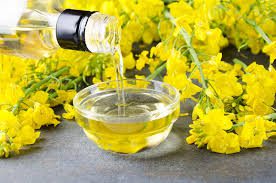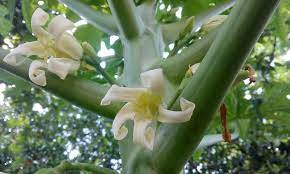The Soybean Ovary: Economic Importance, Uses, and By-Products
The soybean ovary is a critical reproductive structure located at the base of the flower within the soybean plant (Glycine max). It is part of the female reproductive system and plays a fundamental role in seed development and maturation.
The ovary is typically located at the center of the flower, surrounded by the petals, sepals, and other floral parts. It contains ovules, which are the structures that house the female gametes (egg cells) and develop into seeds upon fertilization.
After pollination, pollen grains land on the stigma, the receptive surface of the female reproductive organ. The pollen tubes grow down through the style and reach the ovules within the ovary, where fertilization occurs. This process leads to the formation of embryos within the ovules, which eventually develop into soybean seeds.
As the seeds develop, the ovary undergoes changes in size, texture, and color. It provides protection and support for the developing seeds, supplying them with essential nutrients and water. Once the seeds are mature, the ovary matures into a pod, also known as a legume or bean, which encloses the seeds until they are ready for dispersal.
The number of seeds produced within the ovary can vary depending on factors such as genetic characteristics, environmental conditions, and pollination success. Soybean plants are capable of producing multiple seeds within a single ovary, contributing to their high yield potential.
Overall, the soybean ovary is a vital reproductive structure that ensures the production of seeds, which are essential for the propagation and continuation of the soybean plant’s life cycle. Its development and maturation are crucial events in the reproductive process, ultimately leading to the formation of viable seeds for future generations.
Economic Importance and Uses of Soybean Ovary

1. Seed Production: The soybean ovary is vital for seed production in soybean plants. After fertilization, the ovary develops into a pod, housing the seeds that serve as a valuable source of protein, oil, and other nutrients.
2. Food Industry: Soybean ovaries are processed to extract oil and protein, which are widely used in the food industry. Soybean oil is used for cooking, frying, salad dressings, and margarine production, while soy protein is utilized in meat substitutes, dairy alternatives, and nutritional supplements.
3. Livestock Feed: Soybean meal, a by-product of soybean ovary processing, is a major component of livestock feed. It provides essential nutrients such as protein, amino acids, and minerals, contributing to the growth and health of poultry, swine, cattle, and aquaculture species.
4. Biofuel Production: Soybean oil extracted from ovaries can be converted into biodiesel, a renewable alternative to fossil fuels. Biodiesel derived from soybean oil reduces greenhouse gas emissions and dependence on non-renewable energy sources.
5. Pharmaceuticals: Soybean ovary extracts contain bioactive compounds with potential medicinal properties. Research suggests that soybean-derived compounds may have antioxidant, anti-inflammatory, and anticancer effects, leading to the development of pharmaceutical products and nutraceuticals.
6. Cosmetics: Soybean ovary extracts are used in cosmetic formulations for their moisturizing, antioxidant, and skin-soothing properties. They are found in skincare products such as creams, lotions, serums, and hair care products, promoting skin health and beauty.
7. Industrial Applications: Compounds derived from soybean ovaries are utilized in various industrial applications. For example, soy-based lubricants, adhesives, coatings, and plastics offer eco-friendly alternatives to petroleum-based products, reducing environmental impact.
8. Soil Fertility: Soybean plants, including their ovaries, contribute to soil fertility through nitrogen fixation. Rhizobia bacteria in the root nodules of soybeans convert atmospheric nitrogen into a form that can be used by plants, enriching soil fertility and reducing the need for synthetic fertilizers.
9. Phytoremediation: Soybean plants, including ovaries, have the ability to absorb and metabolize pollutants from soil and water. This phytoremediation process helps to clean up contaminated sites and improve environmental quality.
10. Biodegradable Materials: Soybean ovaries are used to produce biodegradable materials such as bioplastics, biofilms, and packaging materials. These eco-friendly alternatives offer sustainable solutions to traditional plastics, reducing plastic pollution and waste.
11. Soaps and Detergents: Soybean ovary extracts are incorporated into soaps, detergents, and cleaning products for their surfactant properties. They help to remove dirt, grease, and stains effectively while being gentle on the skin and the environment.
12. Textile Industry: Soybean fibers derived from ovaries are used in the textile industry to produce eco-friendly fabrics. Soybean-based textiles offer advantages such as softness, breathability, and moisture-wicking properties, appealing to environmentally conscious consumers.
Products and By-products That Can Be Derived From Soybean Ovary

1. Soybean Oil: Extracted from soybean ovaries, soybean oil is a versatile cooking oil used in various culinary applications. It is also used in food processing, biodiesel production, and industrial applications such as lubricants and bio-based plastics.
2. Soybean Meal: After oil extraction, the remaining soybean meal from ovaries is used as a high-protein feed ingredient for livestock, poultry, and aquaculture industries. It provides essential nutrients for animal growth, health, and productivity.
3. Soy Protein Isolate: Through a process of extraction and purification, soy protein isolate is obtained from soybean ovaries and used as a protein-rich ingredient in food products, beverages, and nutritional supplements.
4. Soy Lecithin: Soybean ovary extracts contain lecithin, a natural emulsifier used in food, pharmaceutical, and cosmetic industries. Soy lecithin is valued for its ability to stabilize emulsions, improve texture, and extend shelf life in various products.
5. Soy Flour: Ground soybean ovaries produce soy flour, which is used in baking, food fortification, and gluten-free formulations. Soy flour adds nutritional value, protein content, and moisture retention properties to a wide range of food products.
6. Soy Wax: Soybean ovaries yield soy wax, a renewable and biodegradable alternative to petroleum-based waxes. Soy wax is used in candle making, cosmetics, skincare products, and as a coating for food packaging.
7. Soybean Hulls: The outer hulls of soybeans, separated during processing, are used as dietary fiber supplements, livestock feed, and biomass for energy production. Soybean hulls contribute to digestive health and provide energy for livestock animals.
8. Soybean Grits: Coarsely ground soybean ovaries produce soybean grits, used in food products such as breakfast cereals, snacks, and meat analogs. Soybean grits add texture, flavor, and nutritional value to a variety of food formulations.
9. Soy-based Ink: Soybean oil derivatives are used in the production of soy-based printing inks, reducing volatile organic compound emissions and environmental impact. Soy ink is preferred for its sustainability and print quality in publishing and packaging industries.
10. Soy Biodiesel: Soybean oil extracted from ovaries is converted into biodiesel, a renewable fuel source with lower greenhouse gas emissions compared to conventional diesel. Soy biodiesel helps to reduce reliance on fossil fuels and mitigate climate change.
11. Soybean Extracts: Various bioactive compounds extracted from soybean ovaries are used in pharmaceuticals, nutraceuticals, and functional foods. Soybean extracts may have antioxidant, anti-inflammatory, and cardiovascular health benefits, contributing to wellness products.
12. Soy-based Adhesives: Soybean proteins and derivatives are utilized in the manufacturing of adhesives, coatings, and composites. Soy-based adhesives offer renewable, non-toxic, and biodegradable alternatives to petroleum-based adhesives in construction, packaging, and woodworking industries.
13. Soy-based Paints: Soybean oil derivatives are used as binders in soy-based paints, coatings, and finishes. Soy-based paints offer low volatile organic compound emissions, improved indoor air quality, and durability for architectural and industrial applications.
14. Soy Noodles: Soybean flour derived from ovaries is used to produce soy noodles, a staple food in Asian cuisines. Soy noodles provide a gluten-free, protein-rich alternative to traditional wheat noodles in various culinary dishes.
15. Soy-based Textiles: Soybean fibers extracted from ovaries are used in the textile industry to produce eco-friendly fabrics. Soy-based textiles offer advantages such as softness, breathability, and moisture-wicking properties, appealingto sustainable fashion brands and consumers.
Frequently Asked Questions (FAQs) About Soybean Ovary

1. What is a soybean ovary?
A soybean ovary is the female reproductive organ of a soybean plant, containing ovules that develop into seeds within pods after fertilization.
2. How does the soybean ovary contribute to seed production?
The soybean ovary serves as the site for fertilization and seed development. After pollination, the ovules within the ovary develop into seeds, which are enclosed in pods and harvested for various purposes.
3. What are the nutritional benefits of soybean ovaries?
Soybean ovaries contain essential nutrients such as protein, carbohydrates, fats, vitamins, minerals, and phytochemicals. These nutrients contribute to the nutritional value of soybeans and their derived products.
4. How are soybean ovaries processed into products?
Soybean ovaries undergo processing methods such as extraction, grinding, refining, and purification to obtain valuable products such as oil, meal, protein isolate, lecithin, and other derivatives used in food, feed, and industrial applications.
5. Are there any environmental benefits associated with soybean ovaries?
Yes, soybean ovaries contribute to environmental sustainability through nitrogen fixation, soil fertility improvement, carbon sequestration, phytoremediation, and the production of renewable materials and fuels.
6. What are the main challenges in soybean ovary cultivation?
Challenges in soybean ovary cultivation include pest and disease management, soil and water management, climate variability, market dynamics, and agronomic practices to optimize yield, quality, and sustainability.
7. Are soybean ovaries genetically modified?
Some soybean varieties are genetically modified to enhance traits such as herbicide tolerance, insect resistance, yield potential, and nutritional composition. These genetically modified soybeans undergo rigorous testing and regulatory approval processes before commercialization.
8. How do soybean ovaries contribute to global agriculture and food security?
Soybean ovaries are a valuable crop worldwide, providing essential ingredients for food, feed, fuel, and industrial applications. Soybeans contribute to agricultural diversification, income generation, rural development, and food security for millions of people globally.
9. What research and innovations are underway in soybean ovary utilization?
Ongoing research focuses on soybean genetics, breeding, biotechnology, crop management, processing technologies, and value-added product development to meet evolving consumer demands, market trends, and sustainability goals.
10. Are soybean ovaries safe for consumption and use?
Yes, soybean ovaries and their derived products are generally recognized as safe for human consumption and use. They undergo quality control, regulatory oversight, and safety assessments to ensure compliance with food and environmental regulations.
Read Also: Best Organic Fertilizer for Vegetables









